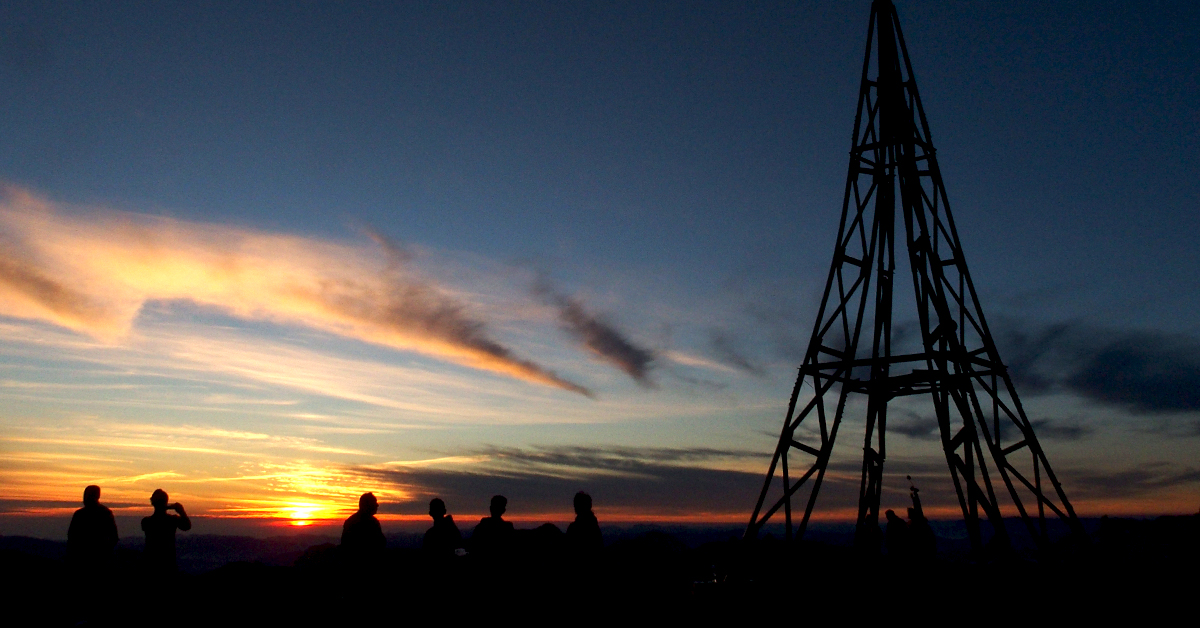Basque ethnography at a glance
There was a beautiful folk custom on St. John’s Day until relatively recently. People would watch and admire the sun at sunrise on the summer solstice, supposedly the day the sun was at its highest in the sky. It emerged over the horizon brighter and more striking than ever, happy to know that it was its big day.
Pascual Madoz provides the seminal reference to that age-old tradition in his Diccionario geográfico written between 1845 and 1850 and in which he gathered information from towns throughout the kingdom. And the entry on Mount Gorbea reads: “Particularly on St. John the Baptist’s Day, large crowds usually gather on the summit at dawn to wait for the magnificent sunrise”. It was a very popular event; however, it is not reported in more recent reminiscing and ethnographic surveys.
Coincidentally, the poet and musician from Laudio, Ruperto Urquijo (1875-1970) also refers to that deep-rooted custom in one of his songs. During his summer stays at the Areatza spa, he composed those tunes, which provide very accurate descriptions of picturesque scenes from the early 20th century. In one of his compositions (Vísperas de San Juan [St. John’s Eve]), he describes that popular outing to Gorbeia to watch the sunrise, followed by dancing, with hot chocolate served, etc. To quote the most interesting fragment:
“Let’s all go to the beautiful spring where shepherds quench their thirst. Let’s all go yet again, let’s go the spring because it is St. John’s Day.
Get up Ana Mari, don’t be lazy, as it is already dawn and four in the morning. Get up Ana Mari as this is the most spectacular morning to see the sun rise”.
The spring is the source of the Igiriñao stream, the last on the way up to the summit, and which is also known as Iturriotz or even Lekuotz.
Those who were coming down from the summit would gather by the spring with the laggards who had watched the sunrise from there.
That reverential visit to the sun was often surrounded by a certain mysticism and was used as a means of spiritual purification by painful bodily penitence. That can be seen from this quote from R. Mª de Azkue: “At night on St. Juan’s Eve, people would go barefoot from Ipiña (Zeanuri neighbourhood) to Gorbea, to watch the sun rise” (Euskalerriaren Yakintza-I, 1935).
This may all reflect the lore throughout the regions bordering the Bay of Biscay and other places of Europe that the sun danced as it rose on that day; a dance of small movements to show its happiness to be celebrating its festivity: “El día de San Juan baila el sol” [The Sun Dances on St. John’s Day], published in the first Anuario de Eusko folklore, in 1921.
Particularly striking in that regard is the desperate reflection by Friar Benito Jerónimo Feijoo, a leading light of the Spanish Enlightenment, who branded that belief as ridiculous in 1740: “The way the sun dances on those days is the way it does on every other day of the year on clear and calm mornings; its rays seem to be moving, or playing with each other, as the sun rises; and that is perhaps how the sun is seen to be dancing in the vernacular”.
Be that as it many, a handful of people still climb Gorbeiagana to watch those new rays appear from that magnificent setting on St. John’s Day each year. It is pure magic. And whether the sun dances or not… that is up to each person and what they want to see.
Felix Mugurutza


